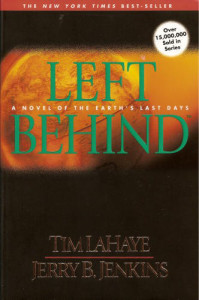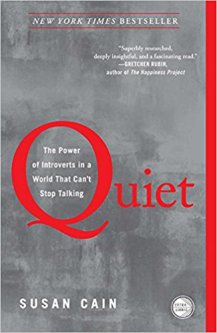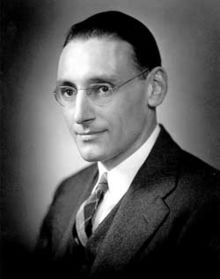 Recently I was re-reading one of my how-to-write books by Christian author James Scott Bell, and he spoke of how many first time writers write a novel beginning with a character just sitting, thinking. Often the thinking includes thinking about loads of backstory items, which make that opening into an info-dump.
Recently I was re-reading one of my how-to-write books by Christian author James Scott Bell, and he spoke of how many first time writers write a novel beginning with a character just sitting, thinking. Often the thinking includes thinking about loads of backstory items, which make that opening into an info-dump.
And then I went upstairs to get something to read and I picked Left Behind, a bestselling Christian novel which made the whole nation aware of the Rapture theory, which was previously pretty obscure even among Christians. And I noted that the first chapter began with main character Rayford Steele, a pilot, sitting in the cockpit thinking.
Now, we know that Jerry B. Jenkins, writer of the series (LaHaye was the theologian and prophecy-wrangler) was not a bad writer. In the author bio in the back of the book it tells that Jenkins had written over 100 books at that time. And Left Behind went on to be a major bestselling book which crossed over into secular audiences. So we know that sitting-and-thinking opening worked. But why did it work?
The scene in question begins on page 1 of my paperback copy and goes on to page 5. I think that the main reason it works was that what Rayford was thinking about was, in fact, adultery.
Now, most people who don’t normally read Evangelical Christian fiction think that is all about devout and perfect Christians who never swear, drink or pick up a deck of cards. So when Rayford starts off thinking about adultery, and about how he feels okay about that because he is ‘repelled’ by his wife Irene’s ‘religious obsession.’
Non-Christian readers (I was non-Christian when I first read the book) were reassured that Rayford was a ‘guy like us’ who wasn’t a religious fanatic or holier-than-thou. Devoutly Christian readers, on the other hand, got the idea that Rayford was not actually a believing Christian but a nominal Christian who went to church only for social purposes and thought that ought to be good enough for God.
The sitting-and-thinking opening also introduce us to some basic facts— the makeup of Rayford’s family, the fact he had not ever cheated on his wife but he was thinking of changing that, and the fact that he was currently flying a 747 airliner over the Atlantic to Heathrow.
Another important bit of info Jenkins is slipping us is the fact that Rayford’s wife had become interested in Bible prophecy and that she believed in the Rapture theory and had told her husband enough that he knew about it (and was not interested.) This is essential setup for the rest of the chapter when Rayford discovers that a number of passengers had disappeared from the airplane and had left their neatly folded clothes behind.
The first chapter goes from Rayford’s thinking-about-adultery scene to another scene that does something that writing teachers warn against in first chapters: it goes into a flashback. The flashback involves a second major character, Cameron Williams, who is a reporter and flashes back to an exciting event he had witnessed in his reporting career— a seemingly miraculous event which thwarted a Russian attack against Israel. (This event has Bible-prophecy significance to the story.)
The problem with a first-chapter flashback, as a writing teacher will tell you, is that you are jumping away from the present story to follow a barely-known character into the past. This break, when poorly done, can make a reader put down a book, never to resume. I mean, it’s harder to stay interested in the story when the author is making you jump around in time before you have even gotten interested in the characters! I have sometimes gotten quite lost in a story because I have a habit of skim-reading especially when part of a chapter seems boring. I can miss the clues that a flashback is starting and wonder what the heck is going on.
The flashback works in this case because it is action-packed, and shows Cameron Williams in action as a reporter willing to go to dangerous places to get a story. It might not have been the best choice for the chapter, but it did get one of the authors desired Bible-prophecy events checked off the list. And it establishes the key fact that Cameron Williams believed in God but had not become a Christian by this point— something essential to establish since the Rapture was going to hit before the end of the chapter.
As a reader, I found that first chapter quite exciting enough to get my attention. I was not a Christian at that time, but when I had been Christian, I had never been in a church that taught the Rapture theory. When I read it I kind of took a superior attitude and thought I knew better than those dumb Evangelical Christians. But I enjoyed the book, and the series, as exciting futuristic disaster-fiction. Probably a reader today might call it ‘dystopian.’
Note: if you are unfamiliar with the Rapture theory, Protestant historian Dave MacPherson has traced the origin of the theory to a private revelation to a young Scottish lady in the year 1830. This private revelation, when made known, impressed some preachers in a church called the Plymouth Brethren who were interested in Bible prophecy. One of them was C. I. Scofield who produced the Scofield Reference Bible which is a popular book to this day. MacPherson has written a book on the history of the Rapture theory as he has discovered it in Plymouth Brethren writings of the time, The Rapture Plot. If you belong to a church or denomination which does NOT teach the Rapture theory, I think it might be a good idea to read MacPherson’s book if you are planning to read or re-read the Left Behind series so you will understand that the Rapture is not a universal belief of all Bible-believing Christians.
Advertisements Share this:





